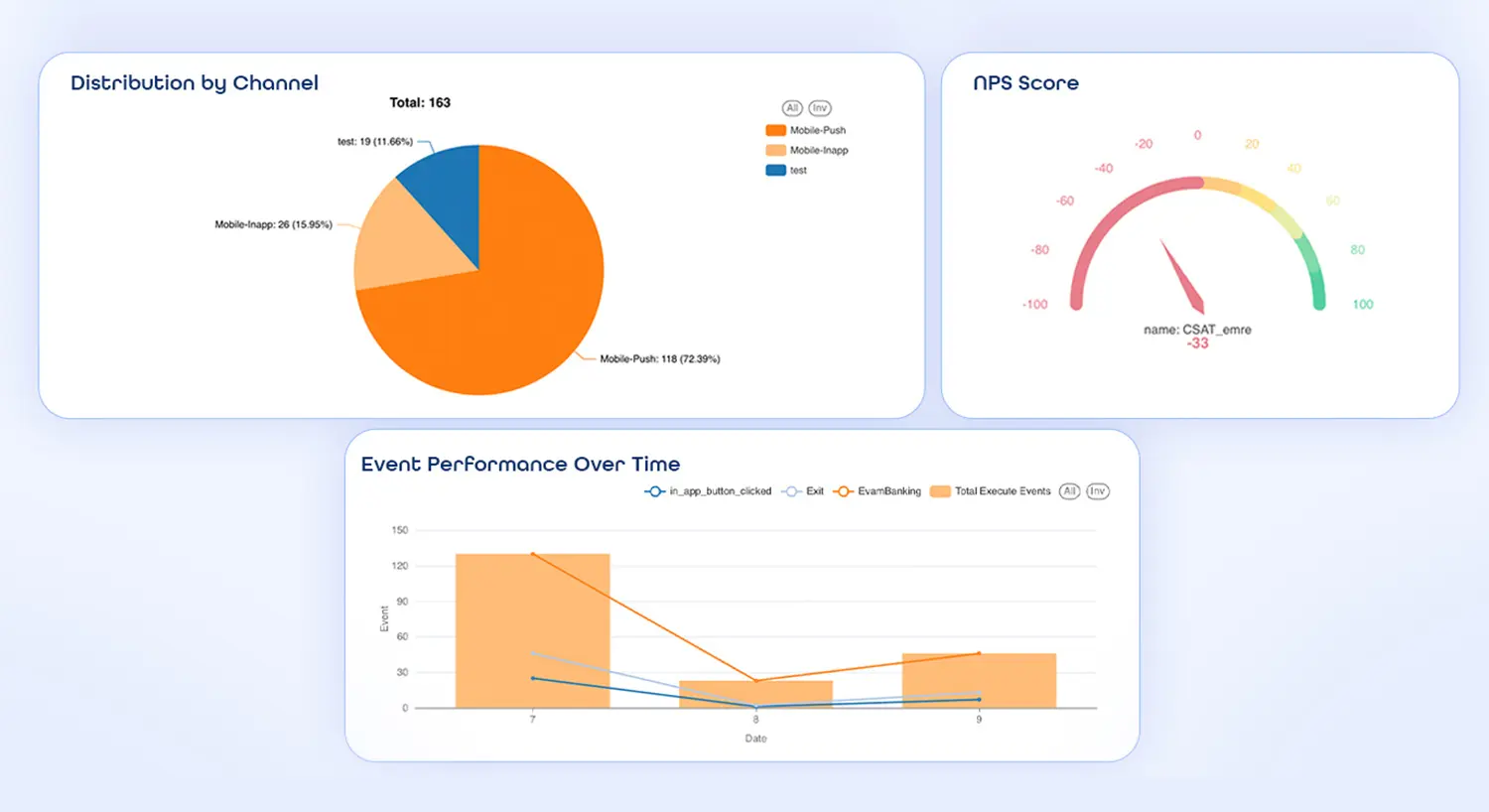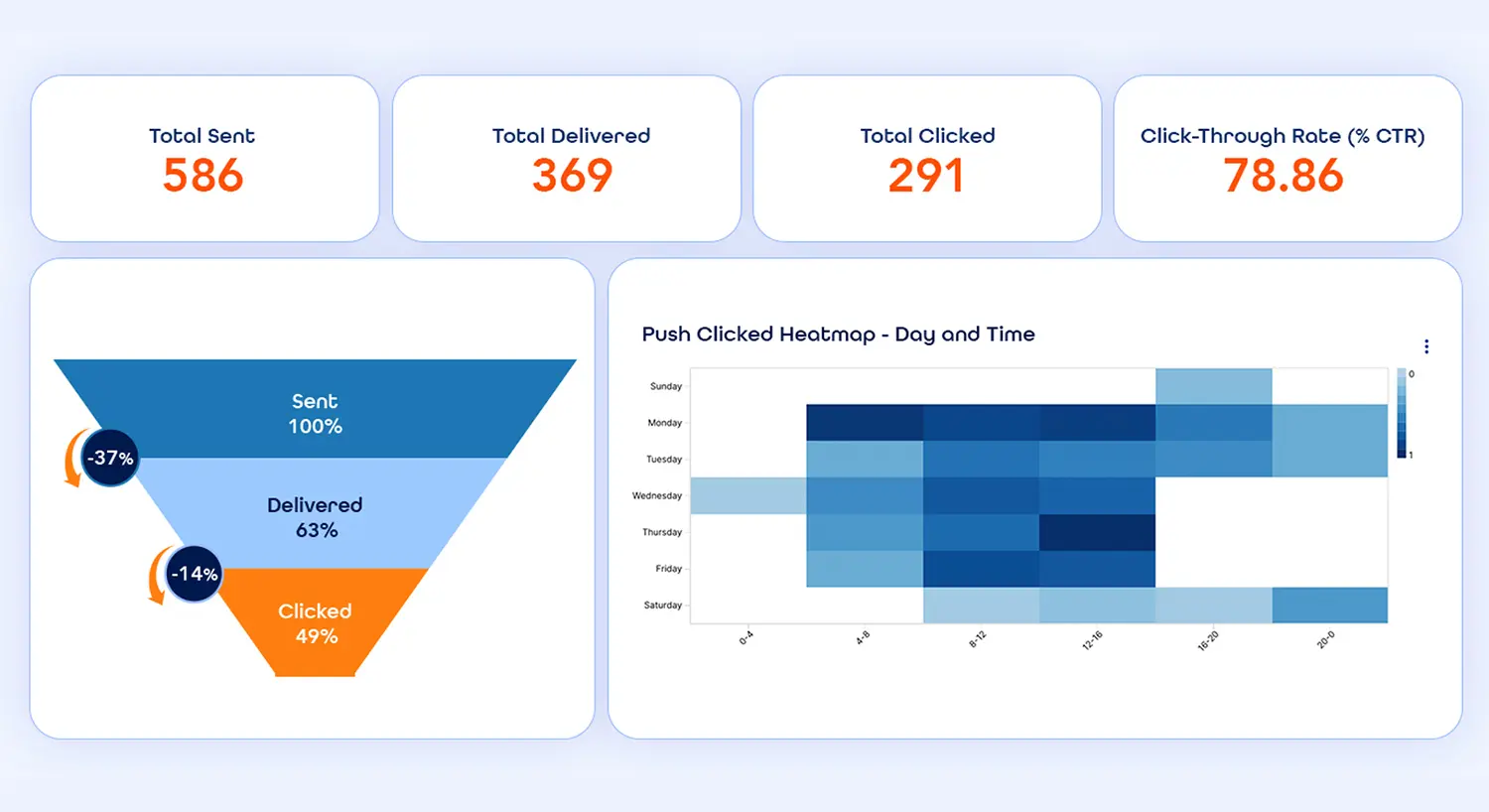Customer Data Platform (CDP)
What is a Customer Data Platform (CDP)?
A Customer Data Platform (CDP) is a type of software that helps businesses collect, manage, and analyze customer data from various sources to create a unified view of each customer. The goal of a CDP is to consolidate and organize data from different touchpoints such as website visits, email interactions, and social media into one central database to better understand customer behavior and preferences.

The Key Features of a Customer Data Platform
The key features of a CDP are as follows:
1. Data Integration
A CDP aggregates data from multiple marketing channels, such as email campaigns, mobile apps, and SMS.
2. Unified Customer Profiles
From this collected data, it creates a single, comprehensive profile for each customer to obtain a holistic understanding of them.
3. Dynamic Segmentation
With a unified view of customer data, a CDP can then segment customers based on various attributes such as demographics, behavior, preferences, and past purchase history.
4. Personalized Experiences
A customer data platform segment can help businesses understand customers more deeply in order to create personalized experiences and orchestrate customer journeys accordingly.
5. Analytics & Reporting
Analytics and reporting features allow businesses to evaluate campaign effectiveness and overall user engagement and satisfaction.
What are the Benefits of Using a Customer Data Platform?
Businesses could harness several benefits from utilizing a CDP for their marketing efforts.
1. Better Customer Insights
By collecting and analyzing data across several touchpoints, businesses can gain valuable insights into customer behavior, preferences, and trends. These insights can then be used to provide customers with experiences that are timely and resonant.
2. Increased Efficiency
CDPs automate data collection, analysis, and integration processes. This reduces the manual effort needed to manage customer data, increasing efficiency while also allowing marketing teams to focus on tasks that require their creativity.
3. Improved Customer Retention
By understanding customer behavior and anticipating their needs, a CDP can also predict when customers are likely to churn. Businesses can use that information to implement retention strategies, such as loyalty programs and promotional discounts, to keep those users engaged.
4. Data-Driven Decision Making
A CDP can provide businesses with actionable insights to ensure decisions such as determining which marketing channels to utilize with each segment, or optimizing products and services, are based on accurate and up-to-date customer information.
5. Consistency Across All Marketing Channels
CDPs can ensure consistency in messaging across different platforms and allow customers to switch between marketing channels without friction, providing a seamless omnichannel customer experience.
What Should Businesses Consider when Choosing a Customer Data Platform?
Here are 7 important factors businesses should consider when choosing a Customer Data Platform:
1. Data Privacy and Compliance
A good CDP ensures that all customer data is stored in compliance with data protection regulations, such as GDPR (General Data Protection Regulation). This helps businesses avoid legal risks and maintain customer trust.
2. Integration with Existing Systems
Businesses should check if a CDP is compatible with their existing CRM systems, eCommerce platform, and data sources.
3. Real-Time Personalization Features
A CDP should gather data from multiple sources into a single customer profile and continuously update it in real-time. A real-time customer data platform grants businesses opportunities to provide customers with personalized communications, products, or services, and connect with them during moments that matter.
4. Automation Capabilities
Businesses must make certain that the platform can automate processes such as gathering data and segmenting customers based on specific criteria such as behavior, preferences, and lifecycle stages.
5. Scalability
The CDP must be flexible enough to scale with a business and handle the data from a growing customer base.
6. User-Friendly Interface
A user-friendly interface that is intuitive for marketing teams to use and reduces reliance on IT teams increases efficiency.
7. Artificial Intelligence
It’s advantageous for a CDP to leverage AI and machine learning to analyze past customer behavior and predict future actions. AI insights can provide significant value to businesses, helping them anticipate customer needs and take proactive actions.
evamX: A Sophisticated CDP for Real-Time Personalization and Insights
evamX is an omnichannel marketing platform that can collect customer data from various touchpoints and gather insights using AI and machine learning tools.
Its modules such as Insight Tracker and Customer Feedback empower businesses to predict and understand customer behavior, preferences, and trends, and take real-time action accordingly.

With its user friendly, drag-and-drop interface, automation capabilities, predictive and gen AI tools, and various other useful features, evamX is a pioneer in creating a comprehensive view of the customer profile and fostering meaningful customer relationships.
Join the Evam Community
Subscribe to receive the latest insights, news, and updates straight to your inbox.


